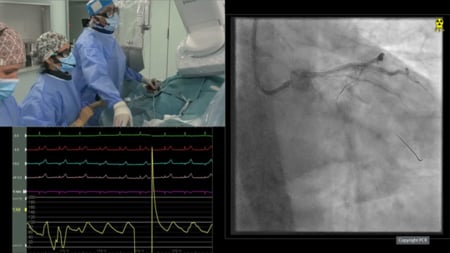Association of cardiac injury with mortality in hospitalized patients with COVID-19 in Wuhan, China
Selected in JAMA Cardiology by S. Brugaletta
This article explores the association between cardiac injury and mortality in patients with COVID-19.
References
Authors
Shi S, Qin M, Shen B, Cai Y, Liu T, Yang F, Gong W, Liu X, Liang J, Zhao Q, Huang H, Yang B, Huang C.
Reference
JAMA Cardiol. Published online March 25, 2020
Published
March 2020
Link
Read the abstractReviewer
Latest contributions
PARTNER 3: transcatheter or surgical aortic-valve replacement in low-risk patients at 7 years 1-year SELUTION DeNovo results: drug-eluting balloon strategy vs. systematic drug-eluting stent in de novo coronary disease Optical coherence tomography- vs angiography-guided coronary stent implantation in calcified lesions: the ILUMIEN IV trialMy Comment
Why this study? – the rationale/objective
Coronavirus disease 2019 (COVID-19) has resulted in considerable morbidity and mortality worldwide since December 2019. However, information on cardiac injury in patients affected by COVID-19 is limited. This article explores the association between cardiac injury and mortality in patients with COVID-19.
How was it executed? – the methodology
This cohort study was conducted from January 20, 2020, to February 10, 2020, in a single center at Renmin Hospital of Wuhan University, Wuhan, China; the final date of follow-up was February 15, 2020. All consecutive inpatients with laboratory-confirmed COVID-19 were included in this study. Clinical laboratory, radiological, and treatment data were collected and analyzed. Outcomes of patients with and without cardiac injury were compared. The association between cardiac injury and mortality was analyzed.
What is the main result?
A total of 416 hospitalized patients with COVID-19 were included in the final analysis; the median age was 64 years (range, 21-95 years), and 211 (50.7%) were female.
A total of 82 patients (19.7%) had cardiac injury, and compared with patients without cardiac injury, these patients were older (median [range] age, 74 [34-95] vs 60 [21-90] years; P < .001); had more comorbidities (eg, hypertension in 49 of 82 [59.8%] vs 78 of 334 [23.4%]; P < .001); had higher leukocyte counts and levels of C-reactive protein and high-sensitivity troponin I (median [IQR], 0.19 [0.08-1.12] vs <0.006 [<0.006-0.009] μg/L), creatinine; and had a higher proportion of multiple mottling and ground-glass opacity in radiographic findings (53 of 82 patients [64.6%] vs 15 of 334 patients [4.5%]).
Greater proportions of patients with cardiac injury required noninvasive or invasive mechanical ventilation or invasive mechanical ventilation than those without cardiac injury. Complications were more common in patients with cardiac injury than those without cardiac injury and included acute respiratory distress syndrome, acute kidney injury and coagulation disorders. Patients with cardiac injury had higher mortality than those without cardiac injury (42 of 82 [51.2%] vs 15 of 334 [4.5%]; P < .001). In a Cox regression model, patients with vs those without cardiac injury were at a higher risk of death, both during the time from symptom onset (hazard ratio, 4.26 [95% CI, 1.92-9.49]) and from admission to endpoint (hazard ratio, 3.41 [95% CI, 1.62-7.16]).
Critical reading and the relevance for clinical practice
This study shows that cardiac injury is a common condition among hospitalized patients with COVID-19 in Wuhan, China, (up to 20% of the overall number of patients) and it is associated with higher risk of complications and in-hospital mortality.
Of note cardiac injury was defined as blood levels of cardiac biomarkers (hs-TNI) above the 99th-percentile upper reference limit, regardless of new abnormalities in electrocardiography and echocardiography. hs-TNI is a classical marker of worse prognosis in many disease. And here it is difficult to define it as a cause of a worse disease or a result of a more severe disease, taking into account the worse baseline profile of those patients with elevated levels of hs-TNI (older and with higher incidence of cardiovascular risk factors).
Regardless of its causative role, I guess it is a valuable marker to recognize those patients with a worse prognosis who may need a earlier and more aggressive treatment of its systemic inflammation. In many hospitals, daily quantification of hs-TNI is indeed recommended. Once we will understand more of the COVID-19 we will clarify if it may cause a direct or indirect cardiac damage.





No comments yet!